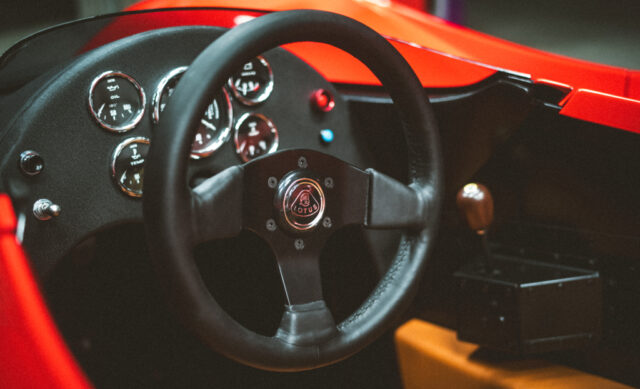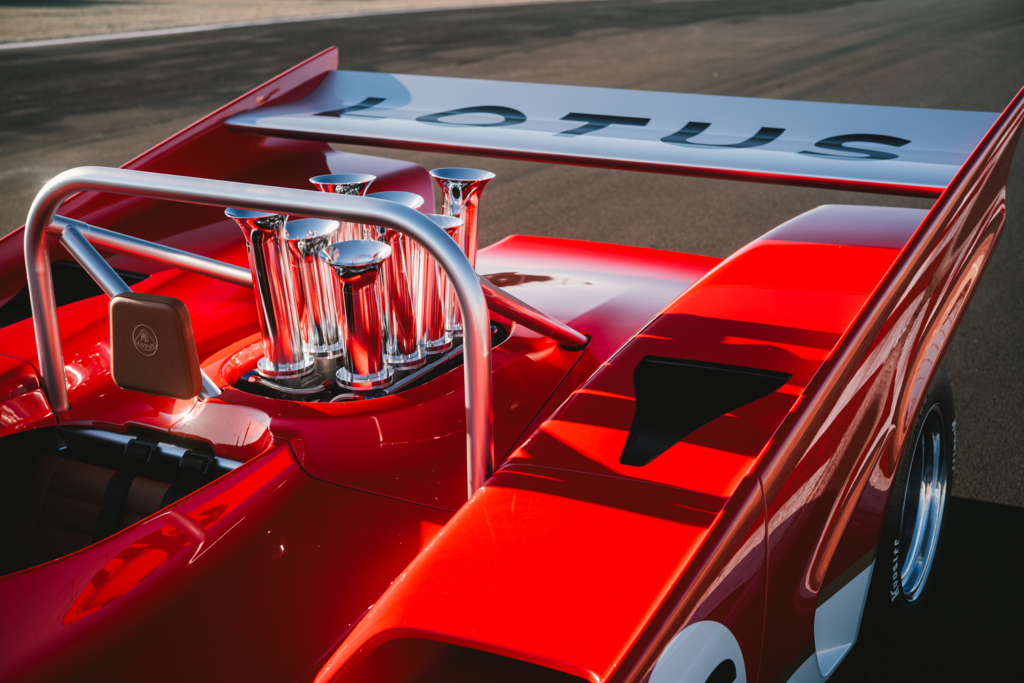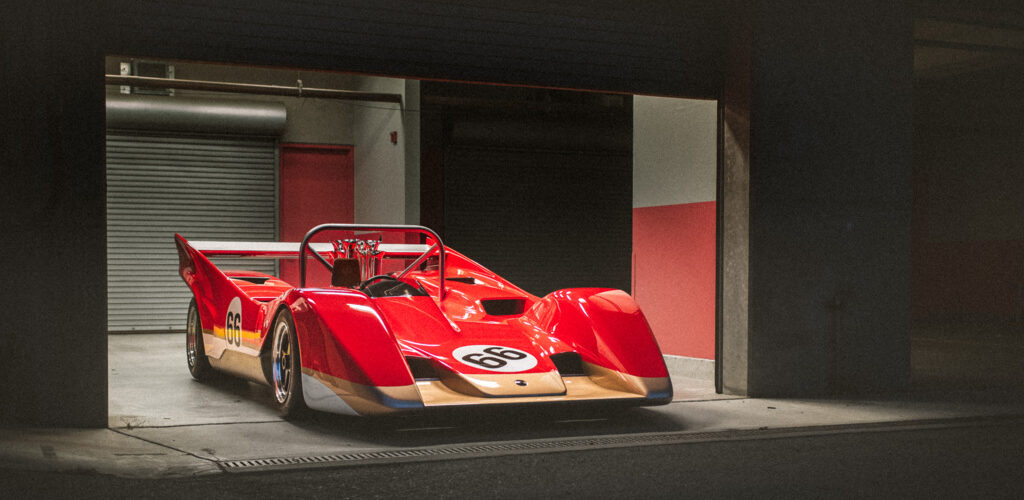WORDS: ELLIOTT HUGHES | PHOTOS: LOTUS
Lotus Advanced Performance debuted the Type 66 at The Quail, A Motorsports Gathering 2023, as the first in a series of historically accurate models that were never put into production. The track-only machine forms part of Lotus’s 75th anniversary celebrations and commands a price tag in excess of £1m ($1.28m).
The Type 66 was originally devised by Colin Chapman to compete in the 1970 Can-Am season, and production will be limited to a mere ten examples – one for each race the car would have competed in.

Powering the Type 66 is a mid-mounted period-representative push-rod V8 than develops in excess of 830bhp


Fittingly, the revived Type 66 was the brainchild of the managing director of Classic Team Lotus and son of Colin, Clive Chapman.
“The car would have shared many innovative features with our most successful Formula 1 chassis, the Lotus Type 72, which was developed during the same era,” he said.
“These include side-mounted radiators, which helped reduce front drag, increase downforce and channel airflow through and over the car. The rear end incorporates a distinctive tail section, resembling the Le Mans endurance cars of the period.

“These features would have boosted its downforce considerably, compared to rivals, aiding high-speed stability and, ultimately, its lap times. It would have been spectacular, as is the actual Type 66 we see today.”
Clive also revealed at the car’s launch that Emerson Fittipaldi – who was present at The Quail as Lotus’s guest of honour – was likely to have raced the Type 66 had it been built in period.
The Type 66’s shared DNA with the Type 72 F1 car is alluded to through the iconic red, cream and gold livery the newcomer wore for its unveiling during Monterey Car Week 2023.

Beneath the eye-catching paint scheme is a lightweight carbonfibre bodyshell honed through 1000-plus hours of Computational Fluid Dynamics (CFD) testing. The bodywork is complemented by a period-representative chassis that features extruded aluminium sections, bonded joints and aluminium honeycomb panels.
The result is 800kg-plus of downforce at 150mph, and more downforce than the car’s total kerbweight at top speed – far more than the original design was capable of.
Powering the Type 66 is a mid-mounted period-representative push-rod V8 that develops in excess of 830bhp at 8800rpm. The peak torque figure of 545lb ft arrives at 7400rpm. Again, Lotus has applied modern engineering know-how to achieve such impressive performance figures, with the engine featuring a forged-aluminium crankshaft, rods and pistons, as well as Can-Am-inspired intake trumpets that maximise the volumetric efficiency of the air heading into the combustion chamber.

Unlike the original, the Type 66 also features modern comforts such as a motor sport-spec electronic power-steering column, a sequential racing transmission, ABS, anti-stall and a fixed rollover bar.
Driver-in-the-loop simulation technology tested how the Type 66 would perform at circuits such as Laguna Seca, Silverstone, Fuji and Spa. Impressively, the results showed lap times that are comparable with those of a modern GT3 race car.
For more information, click here.




